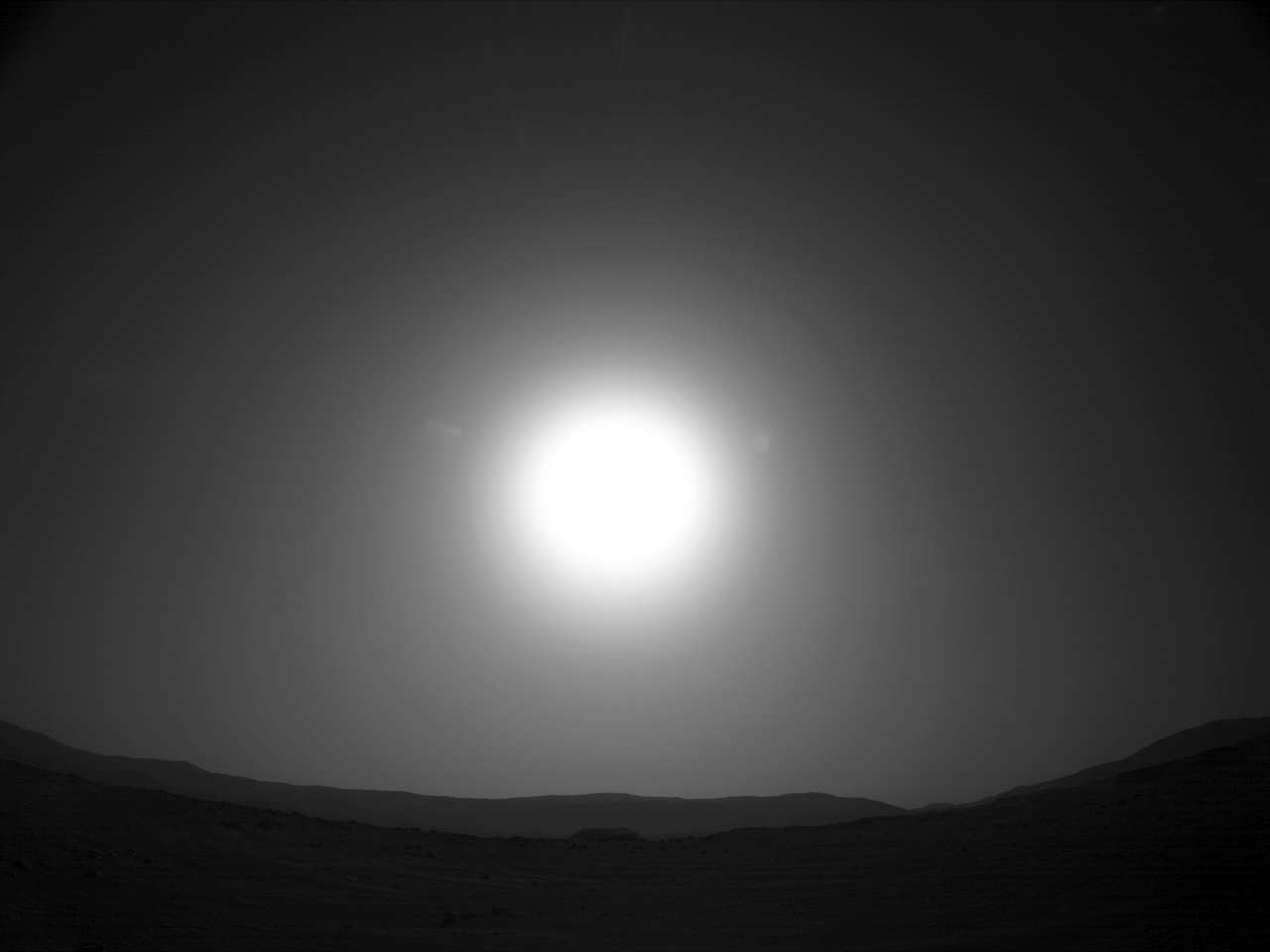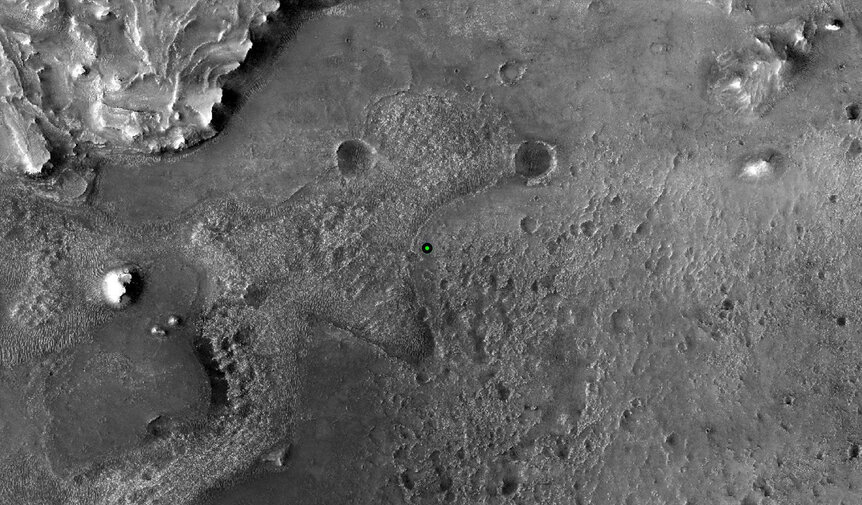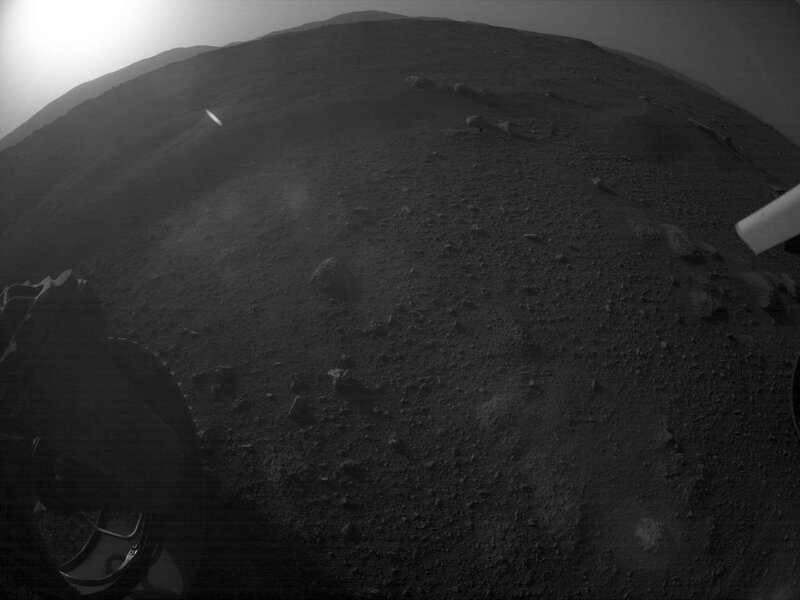Create a free profile to get unlimited access to exclusive videos, sweepstakes, and more!
Sunset on Mars

It's funny what photographs from a space mission impact you the most.
The day after NASA landed the Perseverance Mars rover, they released spectacular images of the landing, including the rover dangling down from the descent stage (or “sky crane”), close-ups of the Martian ground, and more. I was pretty impressed by these and certainly relieved to know things were working well.
Then a few days later they released jaw-droppingly incredible video of the descent, including shots of the parachute unfurling, the heat shield falling away, and both upward and downward facing footage as the rover touched down. Those were ridiculously astonishing, with nothing like them ever having been seen before. I watched it over and over again, stunned by the video and its implications.
NASA has a standing procedure that the raw images from missions like this are publically accessible immediately upon being returned to Earth. By the fifth day after landing, the Perseverance raw images page at JPL was loading up, with nearly 5,000 images from the rover already available.
Flipping through them, one caught my eye. I clicked it, and as soon as it appeared I stopped dead. It wasn't a series of rocks in a sand-laden alien landscape, or close-up shots of our hardware on Mars.
Instead, it was this. Just this.
That is the Sun setting on Mars.
I was immediately hit with a wave of emotion, just staring at it in awe.
I'm so used to seeing weird Martian rocks and hills and craters and sand dunes and cracked landscapes that a simple grayscale image of a sunset nearly blew me away.
It's so… normal. I've seen a thousand like it here on Earth, right outside my window.
But that's not Earth. It's Mars.
Mars days are called sols, and this was taken on February 23, 2021, or Sol 4, the fifth day after landing (landing day is Sol 0). It was captured by one of the rover's high-resolution navigation cameras mounted on its mast.
The rover landed in Jezero crater, which was once a huge water-filled lake billions of years ago, and the topography there is complex. You can see two sets of hills or ridges, one farther behind the other. These are very nearly due west of the rover; as it happens it's very near the northern hemisphere spring equinox on Mars right now, so the Sun sets almost straight to the west. It will be interesting to ID the geography in the image… but that still isn't the main reason it impacts me so.
That isn't technically the first sunset photo Perseverance took. On Sol 0 one of its hazard cameras also took a shot of the Sun going down. However, that camera has a wide-field ("fish-eye") lens that distorts perspective. I think this is the first sunset image it got, and while it's very interesting to me it lacks the connection of the one taken on Sol 4.
The Sol 4 image just calls to me. It's the same Sun we see here on Earth, a similar horizon, a similar landscape, a familiar scene… but it took place on another planet over 200 million kilometers away. Not just a dot in the sky or some photos on a computer, but a place, an actual alien world that we can see and visit and explore and, perhaps, understand.
The primary mission of Perseverance is to seek out evidence that life may have once existed and perhaps even flourished on Mars eons ago. That's why Jezero crater was chosen, a large lake in a past life. I don't know if the rover will find anything, but the very fact that we're looking is important.
And seeing this sunset sent back to us over all that terrible vast distance between worlds, I have to wonder: Did microbes billions of years ago see a similar scene? They may not have had a chance to evolve eyes or even light-sensitive cells before Mars dried up and life went extinct, but could they have responded to sunlight, used it for energy, gone about their tiny but vital lives in a daily cycle of light and dark? Did they even exist, or has Mars always been bereft of life?
We may know soon when Perseverance starts its mission in earnest. It's just now starting to explore this strange, old world. This was only Sol 4. There are many, many sols to go.





























